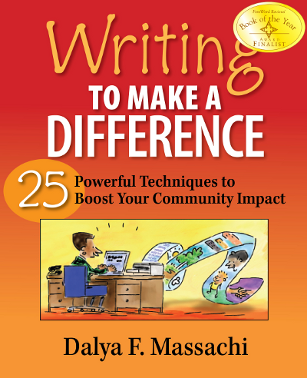[Dalya’s Note] This guest blog post originally appeared on Michael Rosen’s blog on April 19, 2013. Michael J. Rosen, CFRE is President, ML Innovations (http://mlinnovations.com), and Publisher, Michael Rosen Says… (http://MichaelRosenSays.
As you might imagine, I regularly receive direct mail appeals from many charities. Most of them are truly “junk mail.” After a quick glance, I quickly deposit the junk appeals into the recycling bin where they will do much more good than their intended purpose.
Occasionally, I’ll receive a mailing that captures my attention, for the right reasons. Even more rarely, I’ll find something in my mailbox that is worthy of sharing with you. Earlier this month, I found just such a piece.
The postcard mailing from the Jewish Federation of Greater Philadelphia arrived shortly before the Passover and tied into the holiday. This post contains an image of the front and back of the postcard so you can see it for yourself. Federation did a great job with the piece. So, let me take a few moments to share some tips we all can learn from it:
1. Get rid of the envelope. One of the greatest challenges with direct mail is getting people to open the envelope. They won’t get your message unless they do. If you can get your message across in a way that does not require a full mailing package, you can overcome this challenge by simply doing away with the envelope altogether. Federation’s postcard mailing has done exactly that.
2. Employ a pattern interrupt. Another challenge with direct mail involves figuring out ways to engage the recipient so they spend more than two seconds with the piece before tossing it into the trash. When most folks go through their mail, they quickly look for the fun stuff and bills. People quickly weed-out what appears to be junk.
So, how did Federation disrupt the typical mail-sorting pattern? They did it with two very different photos on the front of an odd-sized postcard. While speedily going through my mail, I noticed an old-fashioned, sepia-tone photo of an older couple on the postcard. Beside it, there was a contemporary color picture of a cute, young child eating matzo. The postcard got me to ask, “Huh, what’s this about?”
In other words, Federation caught my attention by being unusual and by presenting contrasting photographs. They knocked me out of my normal mail-sorting pattern.
3. Make it easy to read. By printing black type on a white background, Federation provides strong contrast that makes reading easier. While reverse type was used – something I normally do not approve of — it was used sparingly and with a larger serif font ensuring easy readability.
4. Keep the message brief but impactful. In about 50 words, I learned that Mr. and Mrs. Schweig had passed away long ago. However, I also learned they had contributed to Federation. Most compellingly, I discovered that their generous support would feed 1,500 community members in need during Passover.
The generosity of the Schweigs impressed me. The depth of the community need surprised me. The organization really had my attention.
5. Engage the reader. I was already engaged with the postcard when the photos caught my attention and I read the pithy message on the front of the card. However, the card engaged me further with a simple question: “What will your legacy be?” By asking the reader a question, you can get them to stop and think.
6. Provide more details. On the address-side of the postcard, the reader is told that Mr. and Mrs. Schweig made their gift through a bequest. Providing additional details and telling people where they can get even more information will satisfy all readers and their individual levels of curiosity.
7. Demonstrate impact. Donors want to make a difference. Whether they give to the annual fund or make a planned gift commitment, people want to know that their support will have a positive impact. They want to know that their donations will be used efficiently to help the organization fulfill its mission.
This postcard shows how the support of past donors is being put to good use. The implied messages are: We wisely use the support from past donors to help the community. We can help you to have a positive, high-impact as well.
8. Show appreciation. By recognizing two deceased donors, Federation sends the message that the organization remembers donors even after they are no longer physically with us. By thanking Mr. and Mrs. Schweig for their impactful support, Federation is letting all donors know their support is valued.
For those considering leaving a legacy gift, these are meaningful messages. While some people may not necessarily want to secure a measure of immortality, all donors will be happy to know that they can continue to have a positive impact on the lives of others after they themselves are gone.
(See Part II of this article HERE.)



